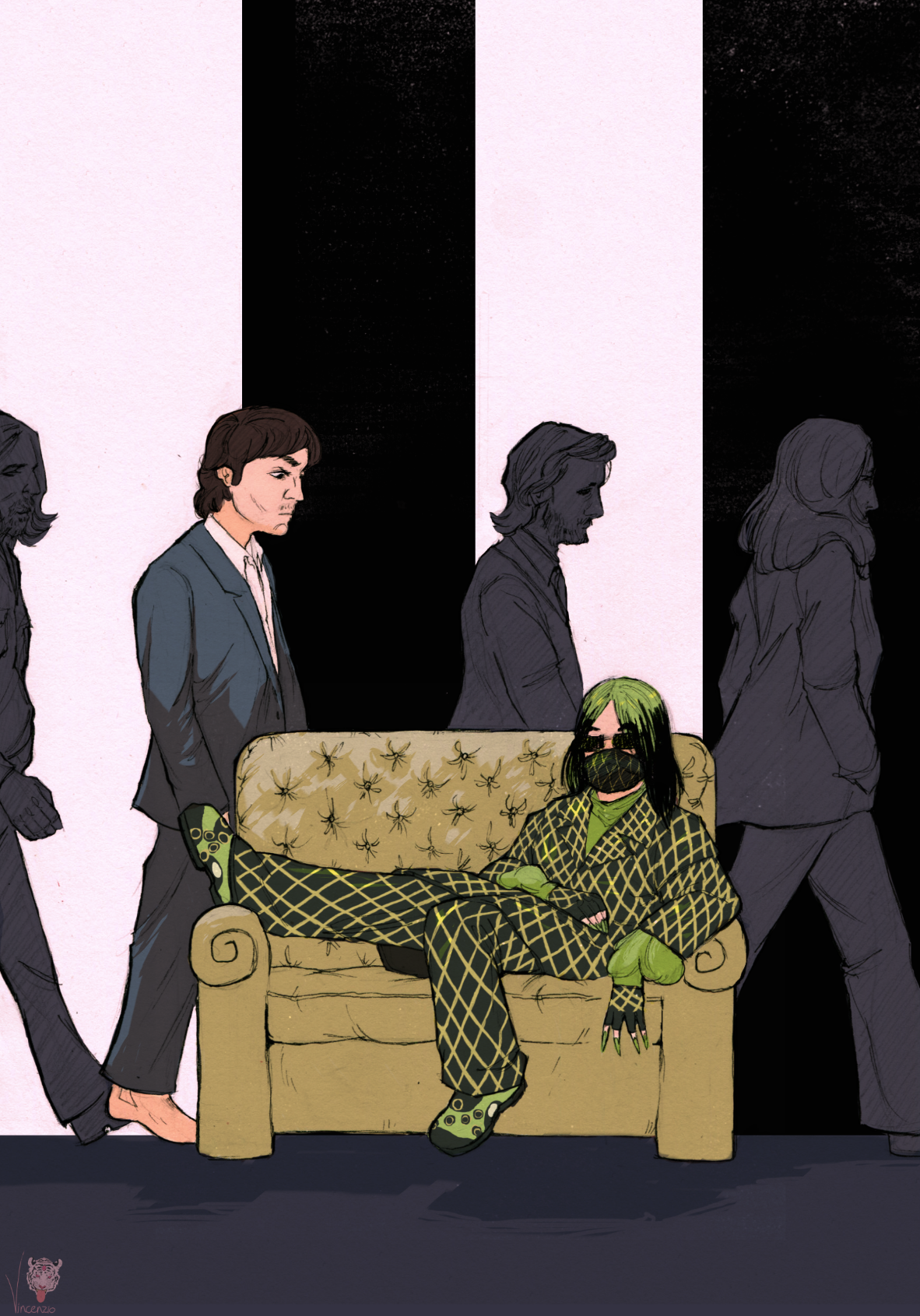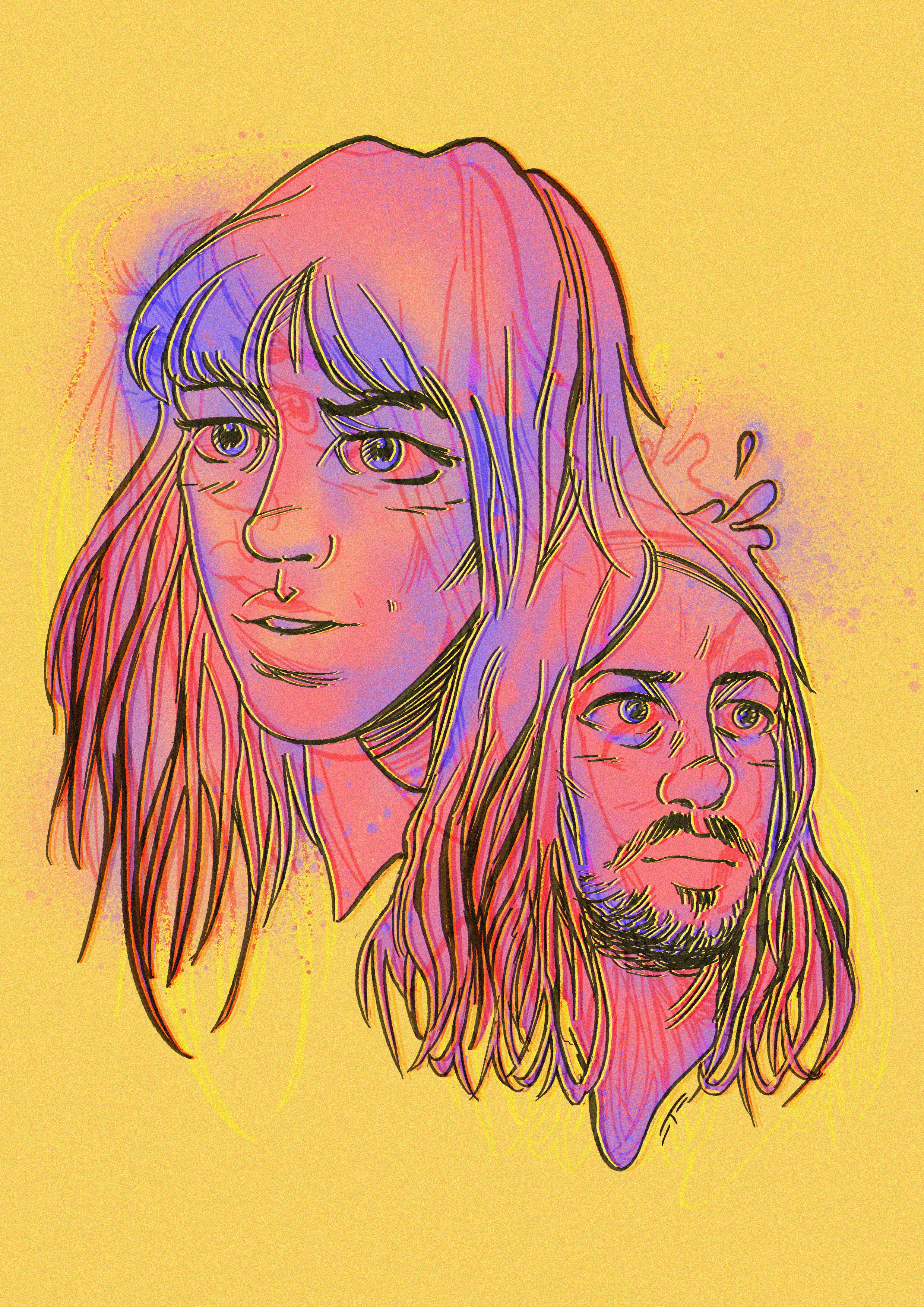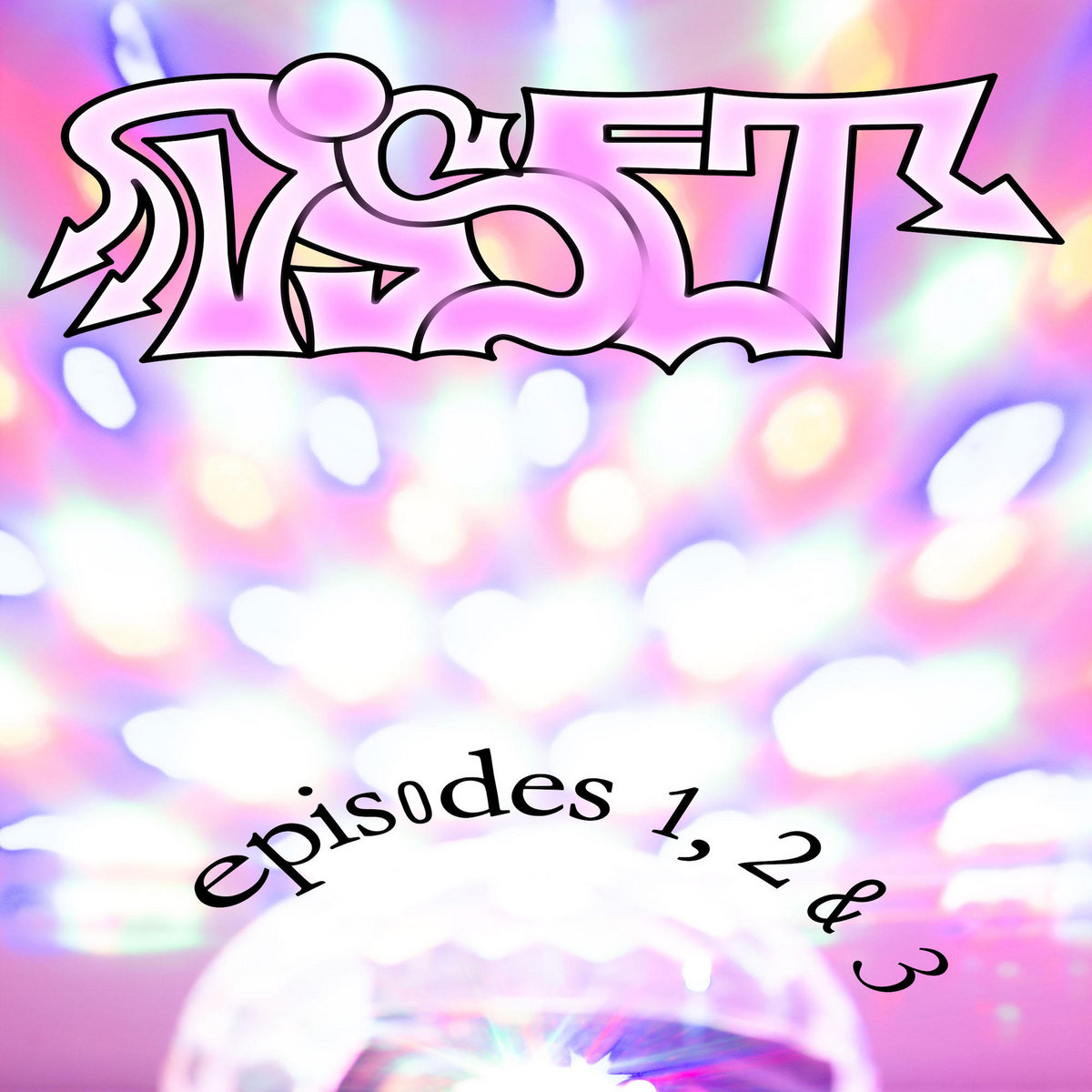Does King Gizzard & The Lizard Wizard’s ‘Gizzverse’ Really Exist?
Words by Tom Walters
Graphic by Estudio Oscuro
King Gizzard & The Lizard Wizard are a band from Melbourne, Australia. Their mammoth output – 18 albums in ten years, five released in 2017 alone – has earned them a growing international following. While their records offer what seems to be simple combinations of garage rock, prog, jazz, blues, metal and psychedelia, the group’s songs sit heavy with innuendo and deeper meaning.
The longer a fan spends with their music, the more they begin to find the hidden links. Themes, musical ideas and characters slip between songs, and then albums. In total, they come together as a slightly disjointed vision. Fans call it ‘The Gizzverse’. And, much like the shared continuities and cinematic universes which litter the storytelling of contemporary culture, it has its own recurring cast.
The most well-known of these characters is Han-Tyumi. First appearing on the closing song cycle of 2017’s Murder of the Universe, Han is the last amongst mankind to be born human before joining the rest of his race in becoming a fully digital being. This does not sit well with Han who builds the Soy-Protein Munt Machine, a sentient apparatus embodying what Han believes to be the two defining characteristics of humanity: death and vomiting.
Not long after its creation, Han and the Munt Machine make the decision to solve their respective shortcomings and merge. This, in turn, kicks off a catamorphic chain of events known as the ‘Murder of the Universe’ which occurs across albums Murder of the Universe, Polygondwanaland and Nonagon Infinity.
This, however, is not the entirety of Han’s story. The android is also speculated to be present on Nonagon Infinity and possibly Infest the Rats’ Nest. Han also appears on the cover of Fishing for Fishies, an album whose leading single ‘Cyboogie’ chronicles the immediate aftermath of Han’s conversion to robotic form. There are a number of more debatable ‘cameos’ such Tyumi’s voice cropping up in ‘Tezeta’ on Sketches of Brunswick East.
Despite his fame, Tyumi is but one character among many. King Gizzard’s albums tell the stories of gamblers, cowboys, Australian Rules footballers, people-vultures, Balrogs, lightning gods, flesh-eating beasts, sages and space-faring eco rebels. Each of these tales, the band contends, takes place in a universe of its own yet the band maintains all such universes are parallel. These stories are connected and co-exist in a meaningful way. Furthermore, the band has already decided, or so they claim, how the story ends. They have planned what their final album – hopefully arriving many years from now – will be.
However, statements like these are best taken with a healthy dose of skepticism. While King Gizzard have good-humouredly ‘confirmed’ an interconnected Gizzverse on several occasions, rarely have they given so much as a hint as to how much of their fans’ speculation is real as opposed to merely fanciful. Even when band members have offered a stray thought on the matter, it often cuts across tongue in cheek. Still, there is hope for those who spend time adding to the ever-growing collection of memes, flowcharts, and theories explaining this alleged Gizzverse. “There’s a bit of that going on but it’s looser than what [A Song o Fire and Ice author] George R.R. Martin does,” the band’s main songwriter Stu Mackenzie informed Uncut Magazine in April 2019.
Whatever the band or their zealously devoted following say, the Gizzverse does provide one thing with absolute certainty. It gives insight into contemporary culture. The interconnectivity of online fandom has allowed unprecedented opportunities for fans to interact and build off of one another’s thoughts.
Tumblr may have spurred on armies of ‘Stans’ and brought together legions of different ‘Fandoms’ but the Gizzverse, and the wider King Gizzard community, provides something different. That is, the crystallization of the creative side of the fan community. While some fan groups simply ‘Stan’ – lather the objects of their affection with blind displays of devotion and over the top exercises of adulation – the Gizzverse is instead a slightly twitchy eyed act of world-building. The sheer quality of ideas and artistic license taken in regard to the band’s output is mesmerizing. Sometimes, it feels like a continuous dialogue, even if tongues on both sides of conversation remain firmly planted in cheek.
At other times it can feel as if the tenable becomes tenuous. Reddit threads and Facebook memes can lean more towards conspiratorial than believable. But to despair in this manner is missing the point. What really matters is the simple enjoyment.
Music’s culture has a habit of building myth and spinning spurious tales. If the existence of Dylanologists, and Deadheads, Dark Side of the Moon conspiracists, fans who swear that Elvis is alive and that the Beatles’ Paul McCartney has been dead since 1966 attest to anything it’s that music fans spend as much time imagining as they do listening to their favorite bands. At its essence, this is a human impulse, a listener’s feeling of inspiration, the desire to build off of the art that has inspired them and a compulsion to share this creation with people who feel the same.
One could think of the Gizzverse as a children’s toybox or better still a box of Lego. It’s a container of building blocks a childlike imagination can riffle through with not as much a thought as looking at the rules or construction manual. Gizzard’s material provides the building blocks of story and imagination. Balrogs, spaceships, kings, paratroopers, wizards, lords, beasts, and cyborgs are all there to be used at the Gizzfan’s disposal.
Great works of art, songs especially, can often escape their creators’ grasp and take on lives as well as meaning of their own. When this occurs any relationship with the intention of the artist is irrelevant. Like the music which catalyzes it, the process of making meaning of Gizzard’s work can be a source of positivity and escapism. While much of it is without question fanciful and, dare it even be said, idle speculation, it serves a purpose in a world that sometimes feels like it needs a little more of both.










